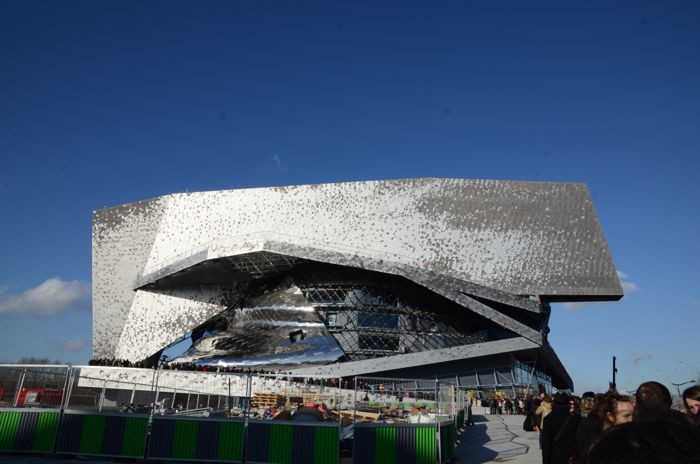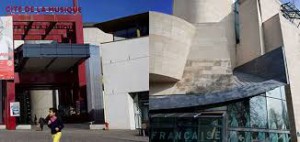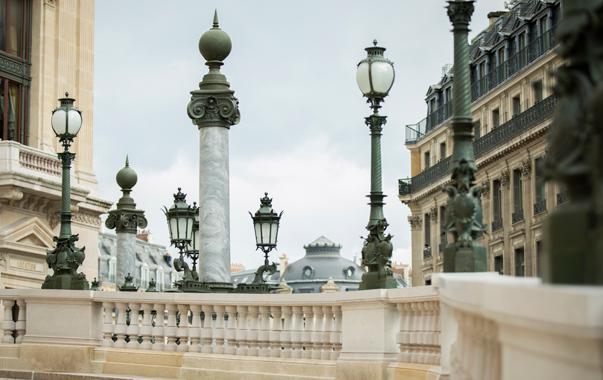News from the new concert hall in Paris, the Philharmonie. This is the press release for Yesterday’s one year anniversary:
1,203,056 people visited the Philharmonie de Paris during its first year.
On 14th January 2016, one year to the day since its opening, the attendance figures confirm and highlight the success that the Philharmonie de Paris has seen since it opened. The new establishment has made quite an impact in the cultural landscape, thanks to the architecture of its two buildings, the acoustics of the concert halls, and the rich and varied programme, which is accessible to all. Above all, the Philharmonie de Paris has been able to not only attract but win the loyalty of a new public sensitive to its prestigious and innovative artistic offerings, as well as its many family activities, and affordable prices.
The summary below includes all of the concerts and activities that took place in the two adjoining buildings of the Philharmonie (designed by Jean Nouvel) and the Cité de la Musique (designed by Christian de Portzamparc). Some figures are compared with the combined attendance data for the Cité de la Musique and the Salle Pleyel in 2014.
1/ BREAKDOWN BY ACTIVITY • 539,722 people attended a (paid) concert: 407,109 in the large auditorium and 132,613 in the two auditoriums of the Cité de la Musique, making an increase of 28% in visitor numbers compared with the Cité de la Musique/Salle Pleyel in 2014. The average seating capacity achieved has been 95%: 97% for the large auditorium (87% for the Salle Pleyel in 2014) and 89% for the two other auditoriums (83% en 2014). • 396,177 people visited either a temporary exhibition or the permanent collection of the Museum of Music, including 196,650 people for David Bowie is, 22,852 for Pierre Boulez, and nearly 85,000 for Marc Chagall: The Triumph of Music (exhibition ends on 31st January 2016). • 153,074 people took part in an educational activity aimed primarily at families and young people: family concerts, participative concerts, shows for young people, musical awareness classes for babies (3+ months), practical music workshops, children’s orchestras, etc. • 39,083 people took part in an educational activity for adults: music culture, pre-concert talks, practical music workshops, etc. • 75,000 people attended or took part in a free-access activity (open rehearsal, meeting with a musician or performer, public workshop, etc.), of which 30,000 flocked to the open days on 17th and 18th January 2015. The total attendance at the Philharmonie de Paris (1,203,056) represents an increase of +65% on the combined attendance of the Cité de la Musique and the Salle Pleyel in 2014 (730,868).
2/ GEOGRAPHICAL BREAKDOWN OF CONCERT AUDIENCES If one compares the geographical breakdown of the Philharmonie de Paris with that of the Cité de la Musique/Salle Pleyel in 2014, one notes: > a clear increase in the number of visitors from outside the Paris region or from abroad: • 48% of visitors came from the City of Paris (60% for the Cité de la Musique/Salle Pleyel in 2014) • 31% of visitors came from the Paris suburbs (30% in 2014) • 21% of visitors came from outside the Paris region or from abroad (10% in 2014) > a rebalancing between visitors from the east and west of the Paris region: • 42% of Paris visitors came from the outer arrondissements in the north and east (10th, 11th, 18th, 19th, 20th) compared with 31% in 2014 at the Cité de la Musique/Salle Pleyel, • 19% of visitors came from the Seine-Saint-Denis department (93) compared with 13% in 2014 at the Cité de la Musique/Salle Pleyel.
3/ SUBSCRIPTIONS The number of subscriptions to the Philharmonie de Paris for the current season (2015/2016) is 21,380, an increase of +31% on all subscriptions to the Cité de la Musique/Salle Pleyel. Out of these, subscriptions for young people (2,289) have increased by +50%. Subscriptions account for 28% of all tickets sold.
4/ WEBSITE The Philharmonie website received 6,086,164 visits, with 60% of visitors aged under forty- five (source Google Analytics). 435,644 videos were viewed on Philharmonie Live, a web TV channel that broadcasts certain concerts from the Philharmonie (62 in 2015) free of charge – both live and recorded.
* With a view to getting to know its visitors better, the Philharmonie de Paris will be undertaking a qualitative and quantitative survey in 2016, in close collaboration with the Department of Surveys and Statistics of the Ministry of Culture and Communication.


